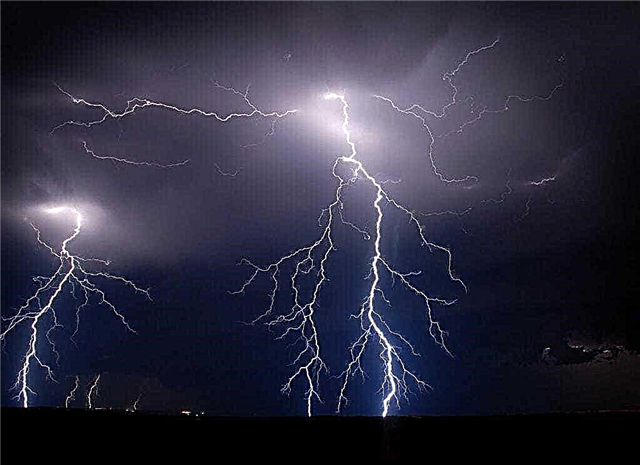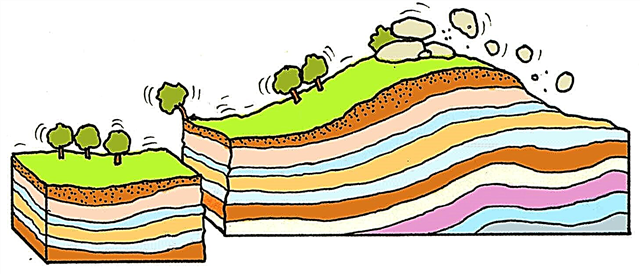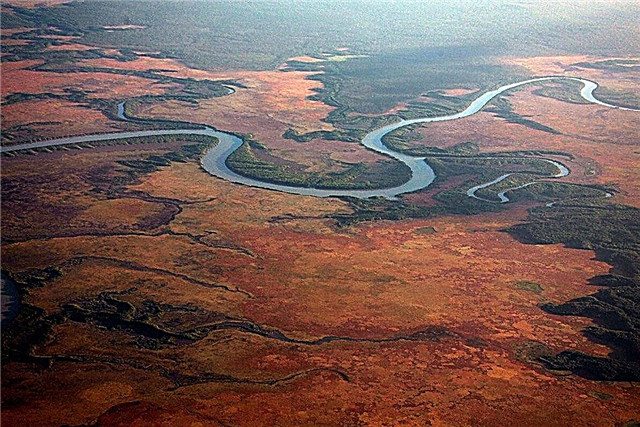
The word "desert" instantly evokes a visual association - sand dunes of incredible height that spread out in all directions. But did anyone try to measure the thickness of the sand layers?
How did the deserts come about?
The desert belongs to the natural zones, and is also one of the 6 main biomes, in addition to the tundra, steppe, tropical, coniferous and deciduous forests. The natural zone is characterized by a certain territorial location and several common features, such as climate, topography, vegetation, etc. The desert is characterized by a special fauna, rare flora (or its absence in general), as well as a predominantly flat surface.
The emergence of deserts is associated with an uneven distribution of heat and moisture. It happens as follows. Above the equator, the air heats up most of all, since here the sun's rays fall on the Earth at right angles. Heated air rises, after which it begins to cool. A large amount of moisture is released, which turns into tropical rainfall.

Then the air masses move into the subtropical zone (south and north). This is facilitated by the trade winds - northeastern and southeastern winds that blow between the tropics year-round. They prevent air flow from circulating in the vertical direction. Thus, trade winds prevent the formation of clouds and, consequently, rainfall.
Air falling to the heated surface of the earth becomes hot.Since the moisture evaporated at the previous stage, it is very dry. The temperature in deserts in summer rises to an average of 30-40 degrees in the shade, and maximum values of about 60 degrees are no exception. Stone and sand surfaces can heat up to 80 degrees. Precipitation is rare and often not ordinary rains, but heavy rainfall. Minor precipitation just evaporates without reaching the ground.
Interesting fact: Deserts formed primarily on geological platforms. They occupy ancient land. Many of them are located near the mountains or are in their environment. Such a relief interferes with the movement of cyclones; therefore, precipitation falls mainly on one side of the mountains.
Desert exploration
Due to the difficult climatic conditions, as well as the political situation in some areas, the study of deserts is associated with many difficulties. However, these are very interesting objects that cannot be ignored. The desert is not only sand. As a rule, it occupies a smaller fraction of the entire area. Deserts can be rocky, pebble, sand and pebble and salt marshes. A separate category is represented by the Arctic deserts, which are covered with glaciers, stones, rubble. They can be snowy or dry. If you take all the deserts of the world along with the Arctic, they will make up 20% of the land.
Desert Sand Thickness
Of great interest is the thickness of the sand layers in the desert, as well as what is under their massif.First of all, under all deserts there is a stone surface. The thickness of the sand in the desert is a variable value, which varies territorially, as well as under the influence of various factors. Measuring it is quite problematic. It is also worth remembering the movement of sand dunes at a speed of 6 to 10 meters per year.
Just under the dunes are the deepest deposits of sand. For instance, the average thickness of sand in the Sahara is 150 meters. Most of the dunes reach a height of several meters or tens of meters. However, there are unique instances. For example, the highest dunes are seen in the Namib desert, which is located in southwestern Africa. Here are some dunes reach 400 meters in height. It is noteworthy that sometimes sand penetrates dozens of meters deep. This happens when the area used to have a lake, which was subsequently filled with sand.

Interesting fact: it is known that minerals in the form of oil and natural gas are located under the Sahara - they are mined in Libya and Algeria, although this process is associated with many difficulties. Also under the desert are significant reserves of fresh water. Scientists even compiled their map. Groundwater is believed to be at a depth of about 75 m.
It is quite difficult to measure the thickness of the sand layer in the desert, because it is constantly changing. In addition, sand dunes move at a speed of 6-10 m per year. Deserts are not only sandy, but also solonchak, pebble, rocky and mixed. The most massive layers of sand are located under the dunes.Their thickness is most often measured in tens of meters. Rarely, but really large dunes are found, for example, in the Namib desert - up to 400 meters in height.












